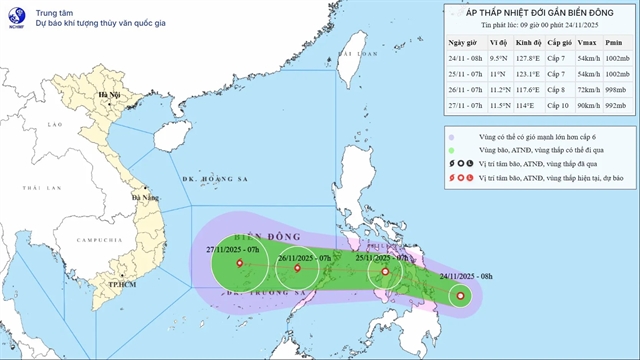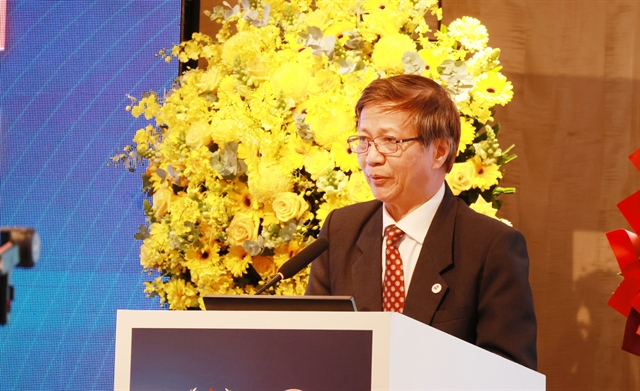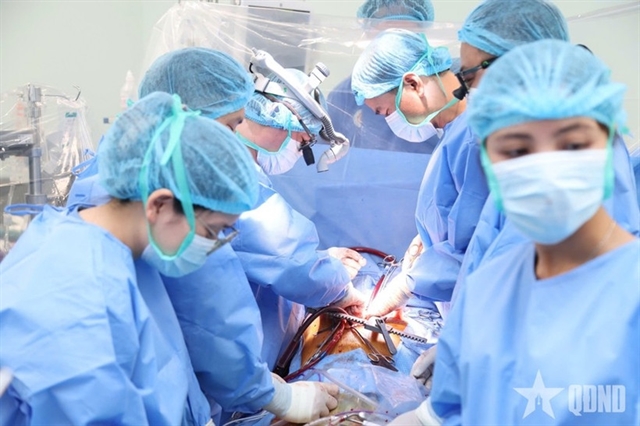 Society
Society

By Hạnh Quỳnh, Việt Đức
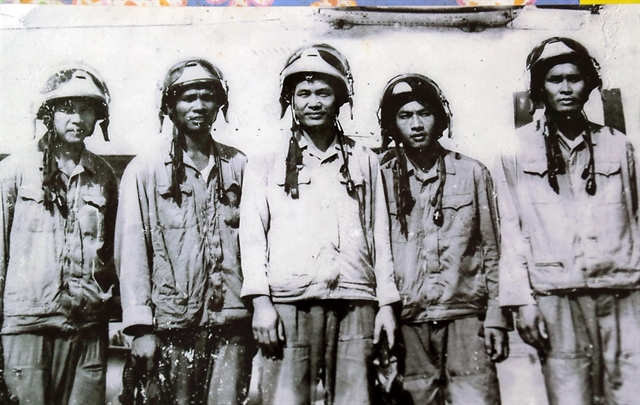 |
| Hoàng Biểu (centre) with his comrades during the war. — VNA/VNS Photo |
HÀ NỘI — In a quiet house on Nguyễn Viết Xuân Street in Hà Nội, Colonel Hoàng Biểu, a veteran fighter pilot of the Việt Nam People’s Air Force, opens a dusty photo album.
Inside are images of him in flight suit more than half a century ago, when he flew night missions to intercept US B-52 bombers over the Hồ Chí Minh Trail.
"We were tasked with a special mission," Biểu said. "Not only to defend the strategic supply route through Trường Sơn, but also to study how to take down the B-52s."
In 1966, US aircraft began carpet bombing the Mụ Giạ Pass in Quảng Bình Province, later expanding their targets to key civilian and military infrastructure, especially the legendary trail. President Hồ Chí Minh ordered the air force to find a way to destroy the B-52s.
The Soviet-supplied MiG-21 fighters arrived in 1966. The following year, Việt Nam’s Air Force formed a three-man night flying team, which included Biểu, and later a full squadron, with MiGs hidden at forward airbases in Vinh, Đồng Hới and Thọ Xuân.
"Night flying was far tougher than daytime missions," Biểu said. "We operated alone, navigating with radar and our eyes, landing on short, narrow airstrips. A moment's lapse could be fatal."
The US soon adapted, shifting their B-52s to night raids, and American radar from the East Sea (internationally know as the South China Sea) tracked the appearance of the MiGs. But even a single MiG over the region was enough to force B-52s to abort.
Biểu recounted a mission on March 30, 1972, in severe weather. Suspecting an incoming strike on Route 9 in western Quảng Trị, he climbed to an altitude of 14km to draw the B-52s’ attention.
His presence forced the bombers to retreat, but their escorting F-4 fighters rushed to engage. Low on fuel, disoriented in fog, and unable to return to Hà Nội, he parachuted into a potato field in Yên Thành.
"I spotted a faint light from a cooperative nearby, crawled toward it, and passed out," he said.
When he woke, headquarters informed him: "We knew the weather was bad. But our troops began the Trị Thiên Campaign in the morning, and the B-52s were coming. We needed you in the sky. Your presence forced them to turn around."
Reflecting on the war, Biểu said the greatest pain was seeing comrades fall and aircraft destroyed. "But we night pilots accepted death lightly—for the homeland," he said.
That same spirit is what drove Lieutenant Colonel Phạm Chu Hải, a former military inspector and member of the famed Quyết Thắng (Victory) Squadron that bombed Tân Sơn Nhất Airbase on April 28, 1975.
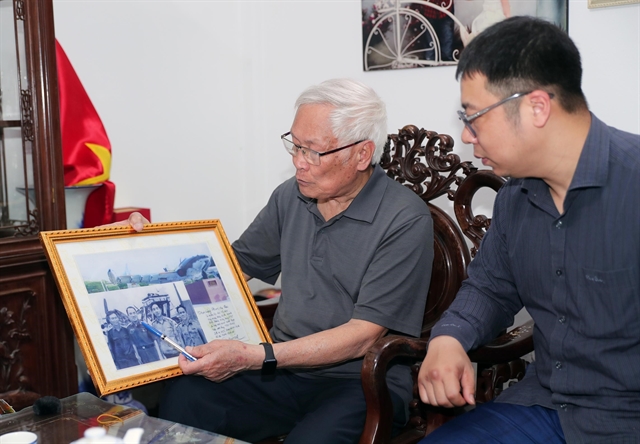 |
| Phạm Chu Hải (left) shows a photo from his wartime service. — VNA/VNS Photo |
After Đà Nẵng’s liberation, Hải, then an officer in Air Division 371, was dispatched south on a classified mission: assess captured South Vietnamese aircraft, particularly the F-5 and A-37, for potential use against their former owners.
At the captured Nha Trang Airbase, he uncovered technical manuals in English detailing the loading procedures for bombs on enemy aircraft. Soon, Vietnamese pilots, many trained on MiGs, began transitioning to A-37s.
The air force even recruited two former pilots of the Republic of Vietnam Air Force who defected to the revolution. "They were highly skilled and eager to atone," Hải said.
By April 27, his team reached Thành Sơn Airbase and prepared five A-37s with fuel and ordnance. The next day, an Mi-6 helicopter delivered more pilots and technicians, some of whom were former South Vietnamese mechanics who had joined the revolutionary cause.
Their target: Tân Sơn Nhất Airport, a critical military hub.
"We picked it because hitting it would shatter enemy morale and send shockwaves through their ranks, paving the way for our armies to liberate Sài Gòn," Hải recalled.
At 4.25pm, five captured A-37s took off, flying low to evade radar. Their bombs destroyed 24 aircraft on the ground, deepening panic in the collapsing Sài Gòn regime.
"Back at base, we waited in agony, praying for their safe return," he said. "They made it."
The strike was later known as the "Sixth Offensive" — the final air assault before Sài Gòn fell.
Despite the dangers and losses they experienced, veterans like Biểu and Hải remain proud of their roles.
"We longed to do something direct on the southern front to help unify the country," Biểu said. — VNS


